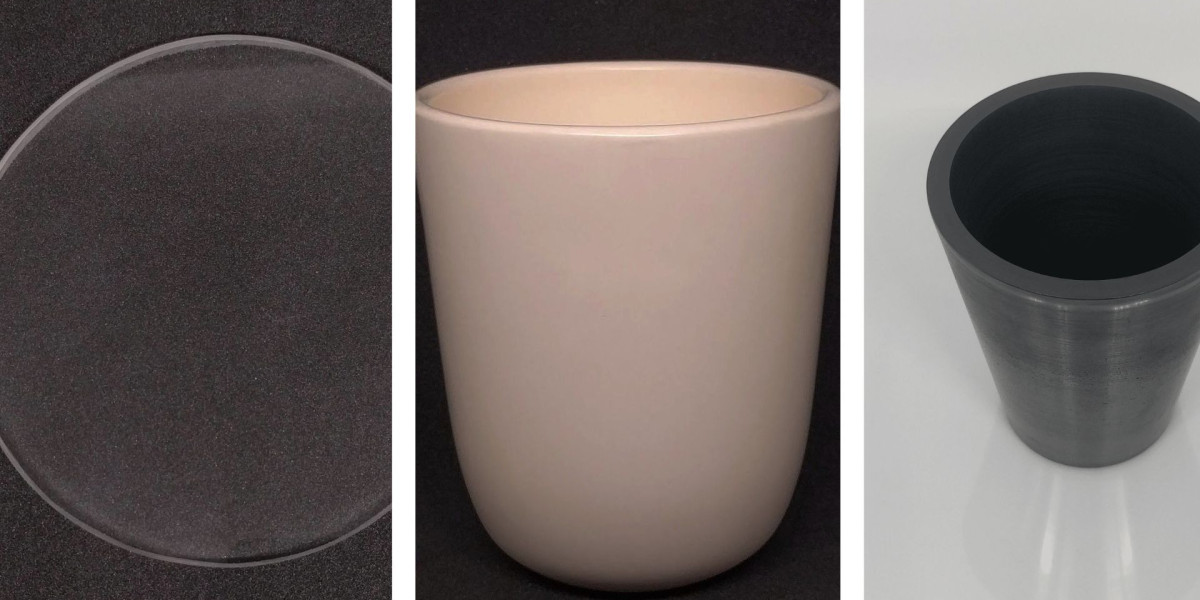In the modern industrial landscape, alumina, graphite, and quartz crucibles have emerged as indispensable components across a multitude of sectors. These materials are known for their exceptional thermal stability, chemical inertness, and mechanical strength, making them ideal for a wide range of high-temperature applications. Below, we delve into the top 10 industries that heavily rely on these crucibles, highlighting their critical roles in driving technological advancements and operational efficiency.
1. Semiconductor Industry
The semiconductor industry is the backbone of modern technology, powering everything from smartphones to advanced computing systems. Alumina crucibles are extensively used in this industry for the growth of single crystals, particularly silicon and gallium arsenide, which are essential for semiconductor devices. Their high purity and thermal stability ensure the integrity of the crystal growth process, leading to better performance of semiconductor components.
Graphite crucibles also play a crucial role in the semiconductor industry, particularly in the production of silicon carbide (SiC) wafers. SiC is a key material in the manufacture of high-power electronics, and the use of graphite crucibles ensures a controlled environment for the sublimation process, resulting in high-quality wafers.
2. Metallurgy
Metallurgy is another industry where graphite and alumina crucibles are indispensable. These crucibles are used in the smelting and refining of metals such as aluminum, gold, silver, and platinum. Graphite crucibles are preferred for their excellent thermal conductivity and resistance to thermal shock, making them ideal for melting and holding molten metals. They are also chemically inert, which helps in maintaining the purity of the metals being processed.
Alumina crucibles, on the other hand, are used for processes that require resistance to high temperatures and corrosive environments. They are commonly used in the production of specialty alloys and superalloys, which are critical for aerospace and defense applications.
3. Glass Manufacturing
In the glass manufacturing industry, quartz crucibles are essential for the production of high-purity glass, particularly in the fabrication of optical fibers and lenses. The purity and thermal stability of quartz crucibles ensure that the glass remains free from contaminants, which is crucial for applications that require optical clarity.
Alumina crucibles are also used in this industry for processes such as glass melting and sintering, where high temperatures are required. Their resistance to thermal shock and chemical corrosion makes them ideal for these demanding applications.
4. Chemical Industry
The chemical industry relies on alumina and graphite crucibles for a variety of processes, including the synthesis of chemicals, catalytic reactions, and material processing. Alumina crucibles are particularly favored for their ability to withstand corrosive environments, making them suitable for the production of high-purity chemicals and reagents.
Graphite crucibles are used in the production of chemicals that require high-temperature processing, such as the synthesis of carbides and nitrides. Their thermal conductivity and resistance to oxidation make them ideal for these applications.
5. Aerospace Industry
The aerospace industry demands materials that can withstand extreme conditions, and alumina and graphite crucibles meet these requirements with ease. Alumina crucibles are used in the production of ceramic matrix composites (CMCs), which are lightweight yet strong materials used in the construction of aircraft engines and other critical components.
Graphite crucibles are used in the casting of superalloys, which are essential for the manufacture of turbine blades and other high-performance parts. These crucibles ensure uniform heating and cooling, which is critical for achieving the desired mechanical properties in the final product.
6. Nuclear Industry
In the nuclear industry, the demand for materials that can withstand high radiation levels and extreme temperatures is paramount. Alumina crucibles are widely used in this sector for the fabrication of nuclear fuel rods and the processing of radioactive materials. Their chemical inertness and thermal stability make them ideal for these sensitive applications.
Graphite crucibles are also used in the nuclear industry, particularly in the production of graphite moderators and reflectors for nuclear reactors. Their ability to withstand high temperatures and radiation makes them a critical component in maintaining the safety and efficiency of nuclear operations.
7. Renewable Energy Industry
The renewable energy sector, particularly the solar industry, heavily relies on quartz and alumina crucibles. Quartz crucibles are used in the production of high-purity silicon ingots, which are then sliced into wafers for photovoltaic (PV) cells. The purity of quartz ensures that the silicon ingots are free from impurities, which is crucial for the efficiency of solar cells.

